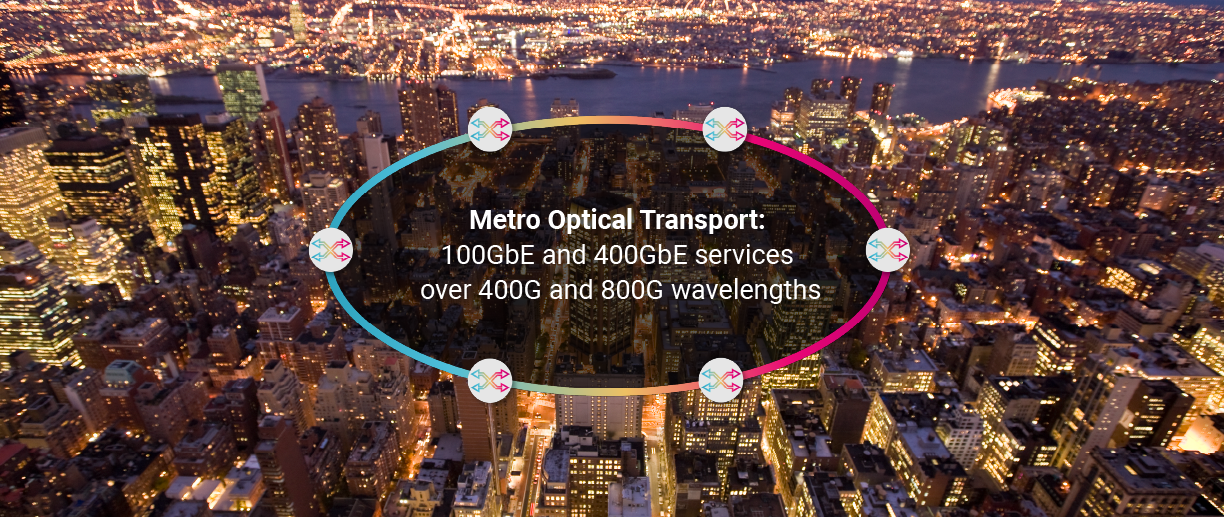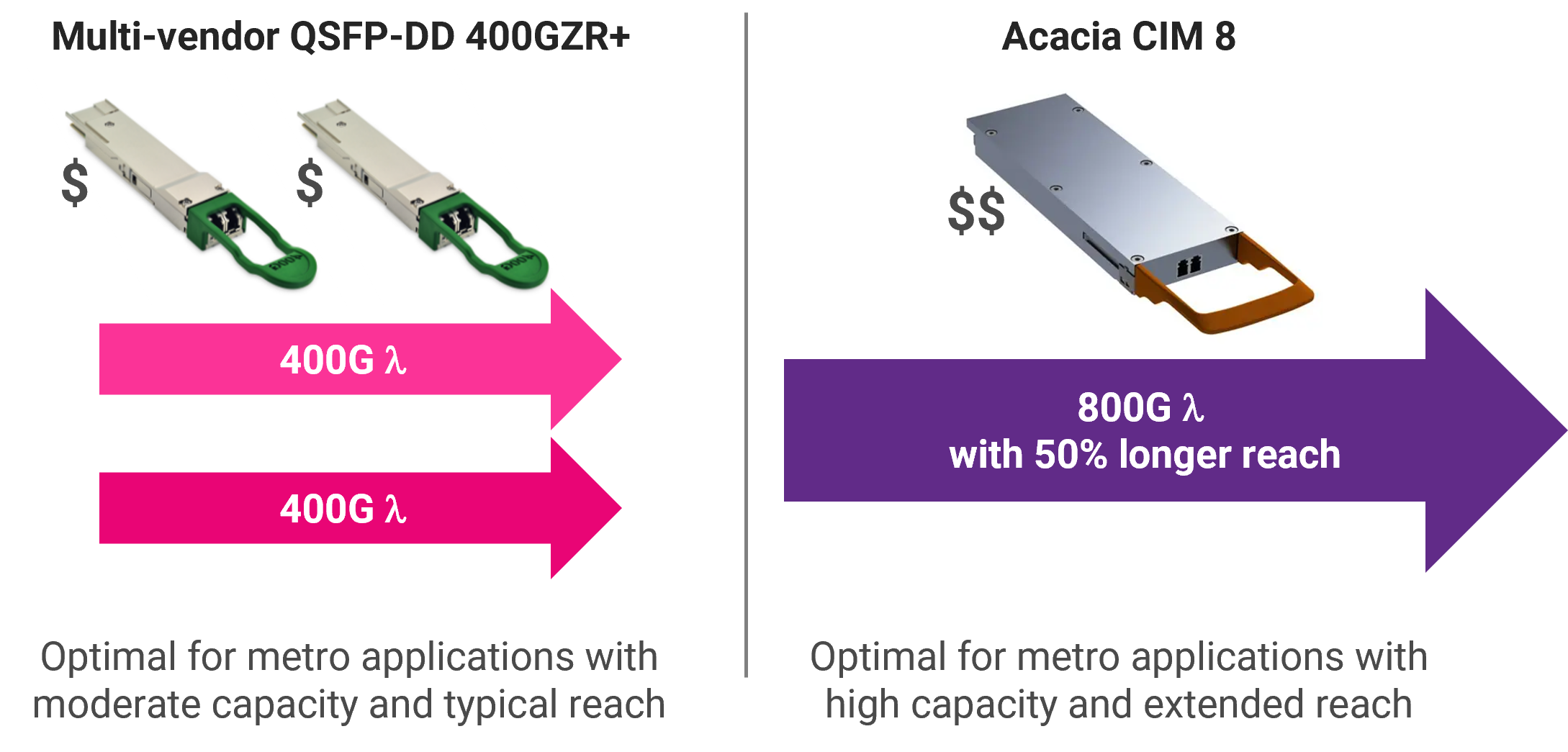A Tale of Two Pluggables: Ribbon’s Choice for Optimizing Metro Optical Networks
In a Light Reading article earlier this year, Scott Wilkinson, Lead Optical Component Analyst at Cignal AI, said, "The transition to 400GbE is well underway, and pluggable coherent 400Gbps technology is revolutionizing the design of the optical networks that connect data centers. 400Gbps speeds will drive spending and bandwidth growth both inside and outside the data center in 2022."

Based on this trend, it is clear that the mission of metro optical networks is to provide economical transport for a mix of currently ubiquitous 100GbE services traffic, and as Scott notes, growing 400GbE services traffic.
Today, transceivers can deliver wavelengths at two line rates to fulfill this mission, 400G and 800G. A 400G wavelength can transport up to four 100GbE services or a single 400GbE service, while an 800G wavelength can transport combinations of these services.
So what are the best transceiver technologies to deliver these wavelengths?
A Tale of Two Pluggables:
At Ribbon, after a thorough investigation, we selected two pluggable transceivers that will be available in early 2023 to fulfill the metro 400G-800G mission. These complement each other to cover the entire metro optical transport applications space.

Our first selection is QSFP-DD pluggables implementing 400GZR+ multi-source agreements. These pack a powerful punch in a diminutive 14cm3 form factor. Operating at 64Gbaud, they can deliver high-power 0dBm 400G wavelengths using 16QAM modulation, giving these pluggables the ability to span multiple ROADM nodes up to about 400 hundred miles (640 kilometers).
We foresee that these QSFP-DD pluggables will be the main workhorse for metro applications. A primary advantage is that they permit pay-as-you-grow deployments, adding 400G wavelengths one at a time as traffic increases. They also enable interoperable multi-vendor transponder solutions by using implementations that conform to the OpenROADM MSA.
Our second selection is Acacia’s proprietary CIM 8 pluggable, based on their state-of-the-art 5nm Jannu technology. While three times the size of the QSFP-DD it delivers much higher performance. Operating at an industry-leading 140Gbaud, the CIM 8 doubles the wavelength capacity to 800G, and extends the range by 50% for extended metro or regional applications.
CIM 8’s operating at 800G with extended range are roughly double the cost of the QSFP-DD’s operating at 400G. They make sense economically for high capacity routes where they deliver equivalent economics on day one in a single wavelength, as well as for longer-range metro-regional applications where their higher performance is necessary.
At Ribbon, we are building our metro optical transport portfolio around these two pluggables, to deliver optimized economics and performance for all applications.
For more information, download our “No Limits Metro 800G and Long Haul 400G Optical Transport Whitepaper”, or feel to contact the author directly at jonahan.homa@rbbn.com.





